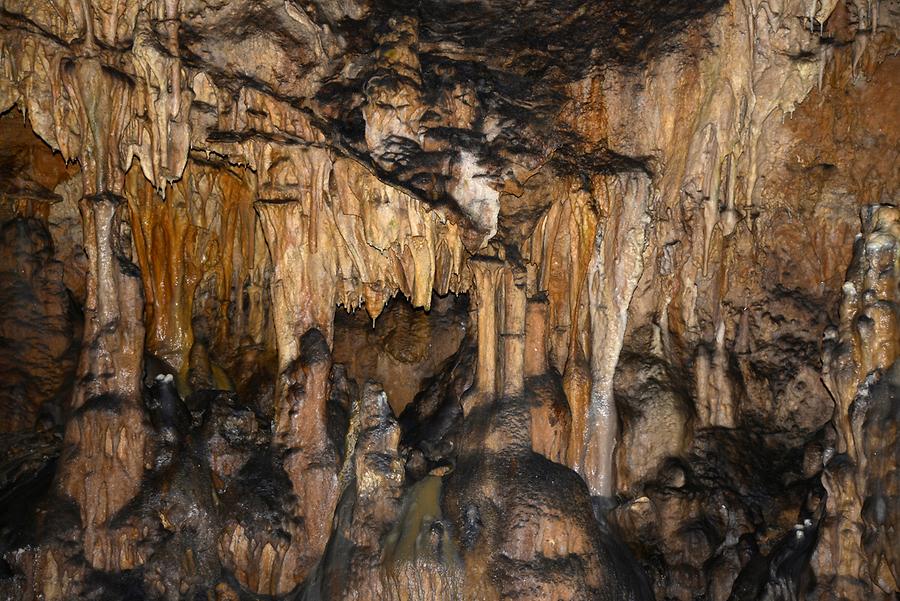Krk - Biserujka Cave#

Krk - Biserujka Cave, May 2016, © Gerhard Huber, under CC BY-NC 4.0 +Edu
Die kleinen Tiere leben in einem Labyrinth aus Tropfsteinen. Es entsteht, wenn sich Regenwasser seinen Weg durch feine Spalten des Gesteins in die unterirdischen Hohlräume bahnt und von der Höhlendecke tropft. Dabei setzt sich das im Wasser gelöste Kohlendioxid ab und bildet von der Decke herabhängende Stalagtiten und vom Boden aufragende Stalagmiten. Die Tropfsteine wachsen etwa 1 bis 2 cm pro Jahrhundert. Ihr imposantes Farbenkleid verdanken sie der Beimengung von Mineralien. Eisen zeichnet für Gelb- und Rottöne verantwortlich. Kupfer färbt Grün und Mangan lässt die Tropfsteine Schwarz erscheinen.
The little animals live in a labyrinth of stalactites. It arises when rainwater makes its way through fine cracks in the rock into the subterranean cavities and drips from the cave ceiling. In the process, the carbon dioxide dissolved in the water settles to form stalactites hanging from the ceiling and stalagmites rising from the ground. The stalactites grow about 1 to 2 cm per century. Their imposing colors are due to the addition of minerals. Iron is responsible for yellows and reds. Copper turns green and manganese causes the dripstones to appear black.